The hardest part of planning a great experiential marketing campaign is finding the right idea. It has to achieve marketing goals, immerse and engage customers, and fit your budget.
That’s why we’ve compiled 17 of the most creative and successful examples of experiential marketing to help get your creative juices flowing. In our list there’s something for everyone—including examples of event marketing, virtual events, product launches, stunts, pop-up stores, virtual reality, augmented reality, and more.
We also break down exactly why each campaign was so successful and a key takeaway to inspire your next experiential idea.
1. Snapchat Spectacles Launch 🕶
Snap Inc. took a unique approach to launching their high-tech sunglasses in 2016. Instead of following a classic digital playbook like opening a waitlist or publishing new online store pages, they put a cartoonishly on-brand yellow vending machine outside their headquarters on Venice Beach. Hundreds of people lined up for hours to virtually try on the colors (using augmented reality at the kiosk) and buy a pair.
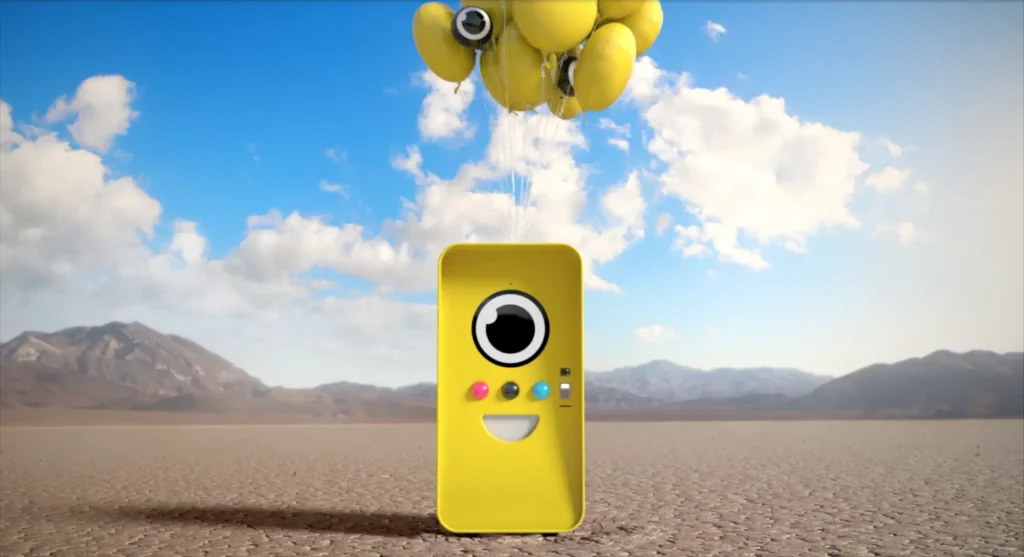
And then it moved around. After a day on-location, the machine would vanish, just like the disappearing photos and videos sent through Snapchat. People had to check the website for clues as to where it would pop up next.
The news and early-adopters went crazy for it.
Why it’s effective: Sure, Snap could have got more sales on day one through an e-commerce launch strategy, but limited availability and barriers to buying sent hype skyrocketing and made people want what they couldn’t have. When they finally got their hands on a pair of spectacles, you bet they shared it on social media.
Consider this: In a world of abundance where consumers can order whatever they want in one click and get it dropped off within hours at their door, sometimes the most captivating strategy is to make your product hard to get.
2. Virtual Concert in Fortnite 🎧
What business does the battle-royale video game Fortnite have hosting a live, in-game, virtual concert? On the surface, it sounds like a gimmick. In reality, it may go down in history as one of the greatest examples of experiential marketing ever. This virtual event attracted over 12 million live attendees and then racked up hundreds of millions of follow-up views—and that is just one of the performances from the concert series.
The reach and reviews of this overall marketing campaign are absolutely stunning, to a level that traditional advertising can’t touch. This brand activation was so influential that it changed the rules for both the gaming and music industries forever.
Why it’s effective: In April 2020, the world was stuck at home due to pandemic lockdowns. People were spending a lot more hours inside and open to new forms of virtual entertainment. Most importantly, the technical and artistic execution was incredible. Fortnite created a true-to-life CGI avatar of the artist, fully embedded in the game world with dancing and special effects throughout.
Consider this: How can you leverage visual media to publish content that will continue to rack up views and marketing engagement long after your activations ends?
3. Rides in the Selfie-mobile 🚖
New York Fashion Week can an incredible opportunity for brands to reach sophisticated clientele that love fashion, but also extremely competitive. Uber and Smartwater teamed up for a unique brand activation where they installed light-up selfie machines in a fleet of black SUVs. They gave free rides along with premium bottled water to a list of influencers who were delighted to snap and share selfies while Uber-ing around town to fashion events.
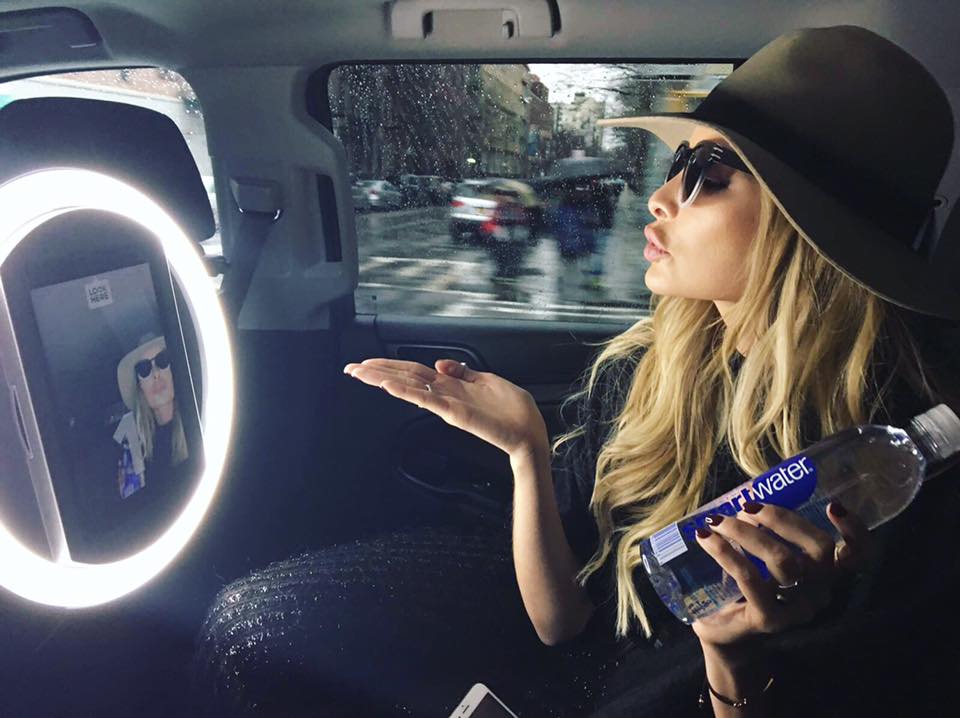
The result was a ton of social media traction under their #ElevateYourEveryday hashtag and a successful partnership for everyone involved.
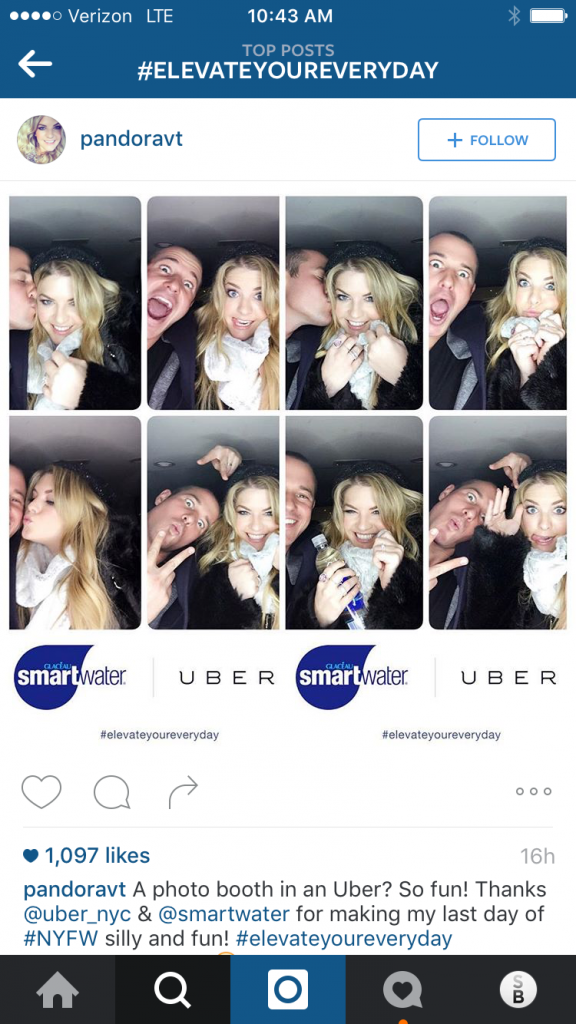
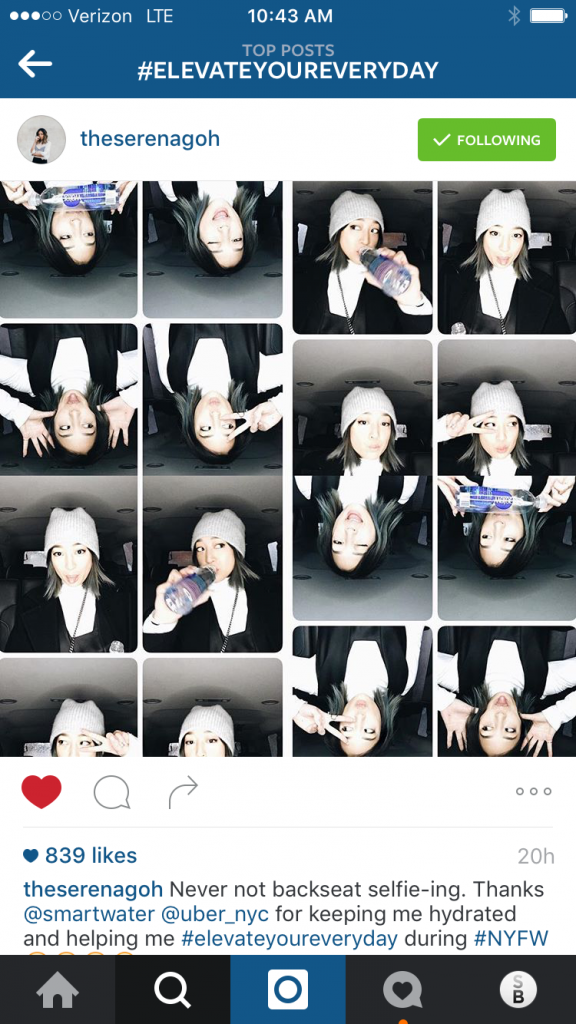

Why it’s effective: Having a selfie station at an unexpected place turned an uneventful car ride into a fun, shareable experience. Influencers were able to try both Uber and Smartwater products, capture it, share it, and have fun while earning tremendous social media reach for the brands.
Consider this: Photos are tangible proof of a great experience. Selfie stations can make a valuable addition to any experiential activation, significantly boosting the possibility of social media sharing. What kind of selfie experience would be an easy win with your target audience?
The Secret to Amazing Selfies
Uber hired Simple Booth, a leader in digital photo experiences, to provide the car-mounted HALO selfie stations for beautifully-lit selfies and the software platform to brand photos, tag hashtags, and track analytics. Experiential marketers leverage our products across the world for user-generated content.
4. Build a Burrito in the Metaverse 🌯
Chipotle and other brands are claiming turf and launching virtual experiences in the metaverse. On April 7, 2022 for National Burrito Day, Chipotle launched a Burrito Builder game on Roblox that lets players roll burritos and earn Burrito Bucks, an in-game currency. The first 100,000 players to roll a burrito got to earn the equivalent of a free entree in the Chipotle app.

“We’ve tapped into play-to-earn, an emerging engagement model in the metaverse, to launch our newest experience on Roblox that celebrates the iconic Chipotle burrito,” said Chris Brandt, Chief Marketing Officer. “We’re blending the metaverse and real-world elements of our brand to take the Chipotle fan experience to a whole new level.”

Why it’s effective: Chipotle is meeting young people where they’re at (online gaming), and at the same time, creating an association with exciting technology that keeps their brand as fresh as their food. Plus, it’s hard to roll a virtual burrito without getting hungry for a real one.
Consider this: While the “metaverse” may be a bunch of overblown hype, there is no denying that video games and online experiences are on a long-term growth trajectory. The average video game hours played per week in the US increase to 16.5 hours in 2021, actually driven by growth in gamers age 45–64. Connecting virtual experiences to the real-world (like a mouth-watering burrito at your local Chipotle restaurant) is an up-and-coming strategy for top brand activations.
5. Kit-Kat’s “Free No WiFi Zone” 🙅♀️
We’ve all heard of “free WiFi, but what about “Free No WiFi?”
In Amsterdam, the iconic confectionery brand KitKat created WiFi-free zones in outdoor spaces by blocking all signals within a 5-meter radius of branded benches. People in need of a break could sit down, and chat with friends, read a book or newspaper, or just relax and be human for a moment.

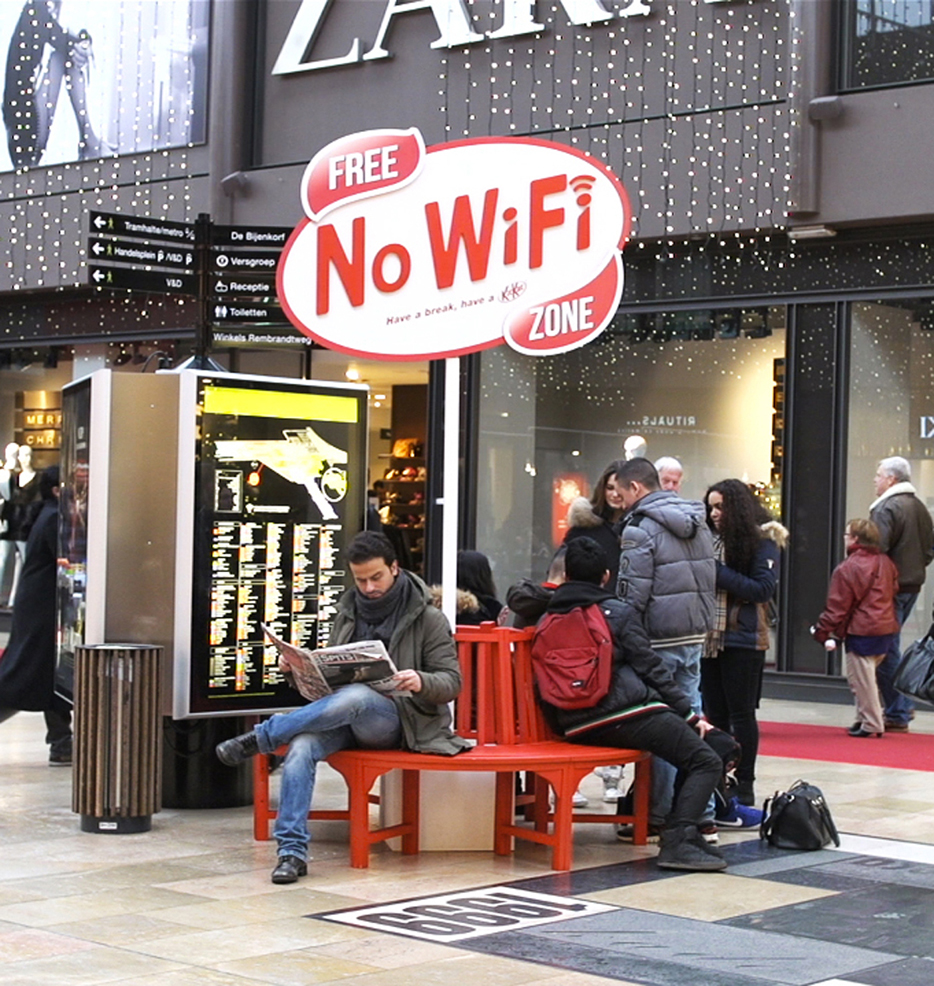
Why it’s effective: The presumption in today’s world is that everyone wants to be connected all the times. More connectivity = better, the telecom and tech companies tell us. The reality is that many people want to disconnect but don’t know how. KitKat’s Wifi-Free Zone both reminded people to take a break and gave them the space to do so. Finally, the experience ties in perfectly with KitKat’s slogan: “Have a break…have a KitKat.”
Consider this: An experience can be the absence of something. Taking a contrarian stance can grab people’s attention and be very memorable. How can you brand get consumers to think differently about the things we instinctively do all the time?
6. Burgers 4 Clowns 🤡
In a twist on a classic Halloween promotion, Burger King offered free Whoppers to the first 500 fans who came dressed to select Burger Kings in cities in 30 countries around the world. Countless clown-garbed burger-lovers, in some cases entire families, descended upon the royal burger joint.
Watch the following video at your own discretion.
Why it’s effective: You either love clowns or you hate them, there is no middle ground. The fact that clowns are so polarizing and yet entirely goofy and harmless, makes a clown night the perfect experiential stunt to get people talking. Plus, Burger King got troll McDonald’s for their clown mascot—showing America they aren’t afraid of no clowns.
Consider this: Trolling competitors can be a lot of fun and themed events are a great way for even small experiential marketing teams to create high-leverage activations. By dressing up for your event, customers effectively create the experience for themselves and each other. What kind of a theme would allow your brand to engage customers and publicly poke at competitors in a silly way?
7. Let’s Paint a Mural Together 🎨
Coca-Cola pulled off a successful stunt for its Deep Spring water brand when it invited people on the street to help paint an enormous black-and-white mural. Brand ambassadors started to ask people if they wanted to paint and soon attracted such a crowd that people had to wait in line to have a turn.
The heart of the mural featured Deep Spring’s tagline, “Sip. Relax. Repeat,” along with a branded hashtag #AllThatsNeeded. Naturally, as each participant finished painting, they received a bottle of Deep Spring.
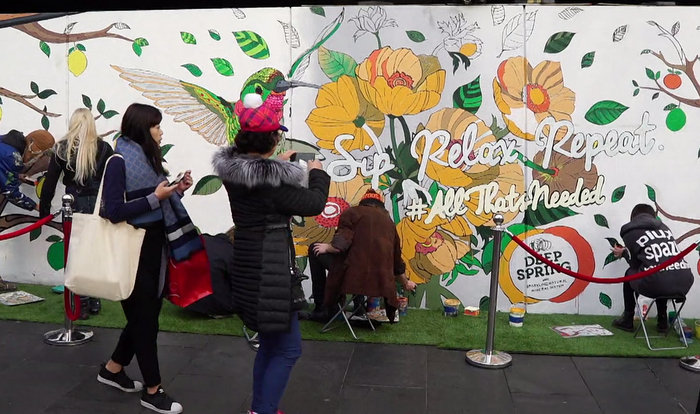
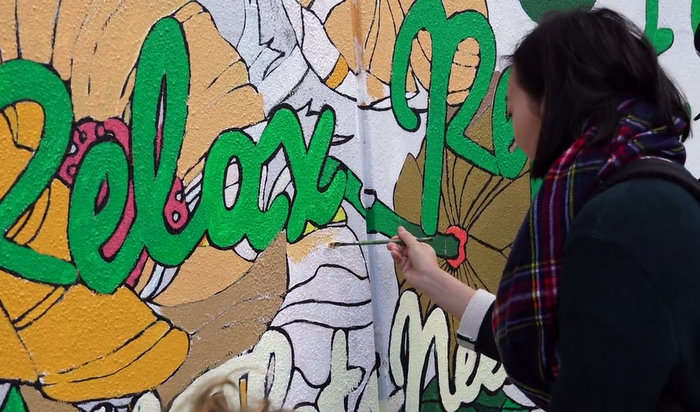
Why it’s effective: The mural became a local piece of art that the community had painted together. When people walk by, they will remember the experience of painting it with a sense of pride, connected to Deep Spring. In addition, the mural was extremely photographic. During the painting and beyond it makes a perfect selfie backdrop to promote the brand.
Consider this: A collective experience not only connects people with your brand, it can connect them with each other. That goodwill and sense of community directly reinforces your brand identity. How can your experiential marketing strategy invite customers to participate and create something beautiful together?
8. Weigh-in on Your Own Terms ⚖️
Seeking to shift their image away from weight loss and toward healthy living, Lean Cuisine went on a quest to ask real women to weigh their most meaningful accomplishments instead of their physical weight on a large scale in Grand Central Station. A professional sign painter then painted 244 of the responses on mini-bathroom scales, which was turned into a massive installation at Grand Central Station.
The brand parlayed the project into an internet phenomenon by asking women on social media to share the ways in which they wanted to be weighed under the hashtag #WeighThis. Their experiential campaign was so successful that it drove a 428% increase in brand conversation and a 33% increase in brand perception.
Why it’s effective: Lean Cuisine did an incredible job identifying the intrinsic needs of their target audience and creating an experience that answered those needs and connected with their emotional core–without once spotlighting the product.
Consider this: People want to feel good about themselves. How can your activation help participants to see the best in themselves—or others?
9. World’s Coldest Fitting Room ❄️
The outdoor brand Globetrotter put ice on the competition when it commissioned its marketing agency to build an in-store “bad weather chamber” for customers to test out gear in bad weather conditions. It could simulate driving rain, storm-grade winds, and body-numbering -30C temperatures (plus wind chill).
Why it’s effective: Globetrotter puts their money where their mouth is by demonstrating that their products could protect them from the elements. Customers could buy with confidence and have fun at the same time. Trying on clothes transformed into a true consumer experience that beckoned adventure and stimulated word-of-mouth marketing.
Consider this: Proving your product quality in an out-of-the-box way can strengthen trust between the consumer and the brand. How can you craft an experience that demonstrates your complete confidence in your product or service?
10. Beer Me That Selfie 🍻
A startup called Ripples manufactures a specialized printer called the Ripple Maker that can print food-grade text, images, and graphics on top of foam. The legendary beer brand Guinness enlisted their expertise and unique technology for an experiential activation on International Stout Day in Dublin.
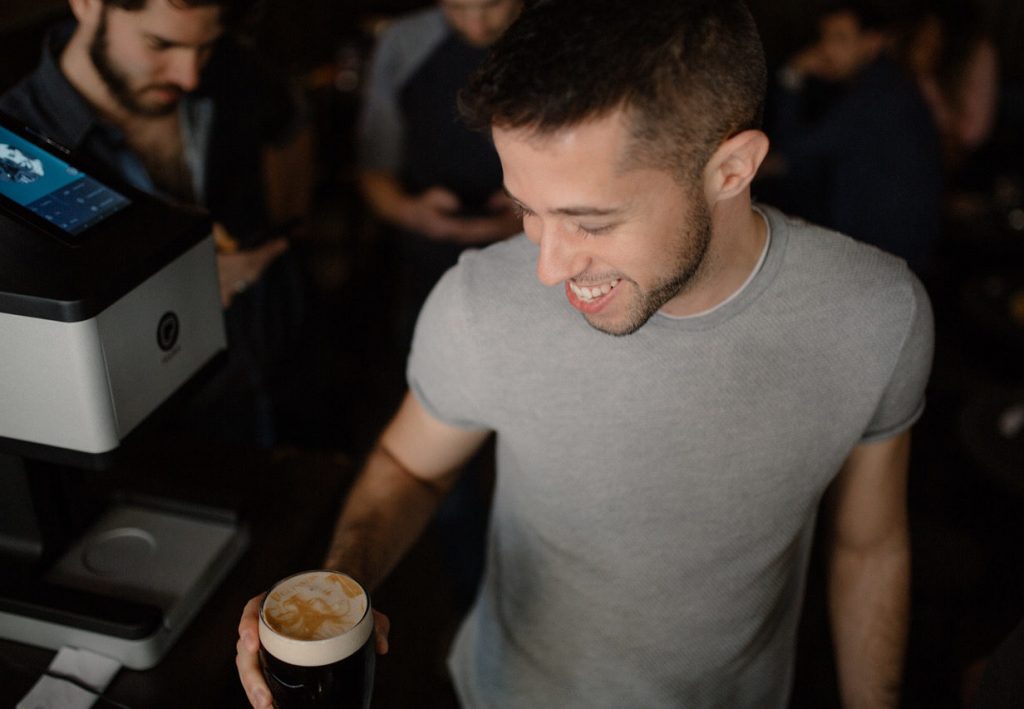
Guinness helped consumers to snap real-time selfies that could immediately be printed on a fresh pint of beer. Guests were delighted to see their own frothy faces floating atop the thick, creamy foam. These fun and unique images were shared nearly 2,000 times on Instagram under the hashtag #stoutie in the seven months after the event.
The activation was so successful that Guinness made it a mainstay at global locations, including their flagship Dublin Storehouse. Over 50,000 pints have been personalized since. Sometimes, the creativity that experiential marketing unleashes can be so powerful that it unlocks new possibilities for overall marketing strategy.
Why it’s effective: Everyone has heard of latte art. Beer art? Not so much. Guinness was able to pair new technology (or technology no one had seen before—just as good) with its product in a seamless way that increased the appeal and resulted in a highly shareable, memorable experience.
Consider this: How can you pair technology with your product to personalize it in a way that makes it unexpected and more shareable? Is there a partner you can team up with that creates a win-win for both brands?
Partners Make All the Difference
Simple Booth® is the modern photo booth platform that ensures your brand and hashtag go out with every photo. With in-person and virtual products, our cutting edge software allows you to capture contact data, track sharing analytics, and much more.
11. The Great Sensitivity Test 🦷
The toothpaste brand Sensodyne teamed up with an agency to create a multi-sensory experience when they held an enormous event in the famous Potter’s Field in London. The event had three different zones that allowed people to engage with the brand in different ways:
- In Zone 1, consumers could get a 10-minute sensitivity dental check with a dentist, win prizes with a “How Sensitive Are You” buzzer game, or get free samples and advice from Sensodyne Brand Reps.
- Zone 2 offered guests a photo opp with a 13-foot molar, strategically placed with the iconic Tower Bridge in the background. (The photos could be retrieved online after the event.)
- In Zone 3, participants gathered to break the Guinness Book of World Record for the largest oral hygiene session—which included live entertainment along with the lesson.
Why it’s effective: Location was key for this activation, drawing working professionals from office buildings all around during the lunch-hour. People are known to procrastinate going to the dentist, so why not bring the dental hygiene to them?
During an otherwise uneventful day, Sensodyne gave consumers the opportunity to practice self-care and also participate in fun activities—there was something for everyone.
Consider this: An experience can have multiple facets as long as it presents a coherent message and brand identity. Might your brand or demographic require a diversity of experiential options?
12. Bay Area Impact Challenge 🏡
Lots of brands “give back,” but it becomes more personal and real when the community is given an opportunity to decide how. Google turned their commitment to local causes into a consumer experience when they activated their Bay Area Impact Challenge Campaign.
In this drive, they pledged to donate $5.5 million to non-profits in the Bay Area. Instead of simply donating the money, they asked Bay Area locals to vote on a selection of non-profits through illuminated, interactive ads placed at bus stops, food trucks, restaurants, and other places. They collected over 400,000 votes in just four weeks.
Why it’s effective: The experience informed consumers about Google’s community outreach program in an interactive way. It made a clear statement about how much Google values the actions and opinions of the local community. Moreover, by placing the ads where ordinary people could access them, the experience touched a large part of the local community.
Consider this: How can you involve your local community and make people feel heard in a meaningful way?
13. Parachuting Apple Sauce 🪂
The Goodness Machine was a traveling, interactive experience that shot GoGoSqueeze products up with parachutes for participates to catch. It traveled to popular landmarks, including the Mall of America and New York’s Madison Square Park.
A kid could walk up and smack the big “Push” button, starting a countdown for maximum anticipation, and culminating in a visible burst of air that catapulted the juice squeezer high above the landing zone. It was fun to participate and fun to watch, too.
People enjoyed the interaction so much, it earned GoGoSqueeze over 200,000 walk-by impressions and 300,000 thousand social media impressions.
Why it’s effective: The machine and the flying applesauce worked exemplified the “on-the-go” nature of the product. Since it could travel to different locations, GoGoSqueeze was able to re-use it in different markets and replicate their success.
Consider this: Is there a crazy way to deliver your product to consumers that would turn it into a novel experience?
14. Test drive. The Stroller Test Drive by Contours
Contours identified a huge challenge in shopping for strollers—children can’t give user feedback. In a comical and engaging move, they created an adult-sized replica of one of their bestselling strollers so that adults could try it out for themselves.
Why it’s effective: It gave parents a chance to take a break from adulting and have a nice laugh instead. Contours allowed parents to sit back, relax, and enjoy the ride—just like their kiddos do when they’re in a Contour stroller. Plus, the stroller was actually comfortable.
Consider this: What creative experiences would become possible if your created a huge (or tiny) replica of your product?
15. TV Show Set Replicas 🤩
In advance of its launch of the revival of Gilmore Girls, Netflix converted over 200 coffee shops across the country into pop-up store replicas of the beloved Luke’s Diner from the show.
The pop-ups invited viewers to step into the iconic Stars Hollow coffee shop for a free cup of coffee. It was wildly popular among fans.
Why it’s effective: Netflix reaped the rewards of experiential marketing by tapping into nostalgia. The diners delighted everyone who ever liked Gilmore Girls, and encouraged its audience to check out the relaunched series. Plus, it was a great photo opportunity for social media.
Consider this: Does your company have a history that your target audience is nolstalgic for? What aspects of that past would they love to relive?
16. The Furniture Climbing Challenge 🧗♂️
IKEA has made a name for itself in Swedish meatballs and also experiential marketing, with activation examples that include showrooms for rent in partnership with Airbnb and sleepover parties to test mattresses in its stores.
This time, IKEA celebrated France’s opening of the country’s 30th IKEA store with a furnished vertical rock-climbing wall. The marketing firm, Ubi Bene, worked with IKEA to install the wall in the center of the city of Clermont-Ferrand. It was a hit attraction.
“As Clermont-Ferrand is a sporty city, IKEA wanted to give to the inhabitants an event that perfectly suits their needs,” explained Vanessa Vannier.
Why it’s effective: People in the area loved climbing! IKEA understood their target audience and designed an experience that would attract eager participants and stand out.
Consider this: What are the interests of your target audience and how can you piggyback on them to design something entirely new?
17. VR Space Experience 🌎
National Geographic’s Space Projection Helmets were an immersive virtual reality experience designed specifically for the release of its new show, One Strange Rock.
The helmets allowed viewers to experience space through an astronaut’s perspective. And wow did they deliver. The ingenious and totally immersive experiential marketing campaign earned National Geographic over 35 marketing awards.
Why it’s effective: Working with real astronauts brought credibility and authenticity to the product design, and viewers who would be interested in the show may have grown up with dreams of seeing space someday—this provides the next-best thing.
Consider this: Are there professionals, experts, or celebrities you can work with to make your activation more authentic and impressive?
Read On: How to Avoid Experiential Marketing Fails
Ready to boost engagement, extend social sharing, and create lasting brand impressions?
